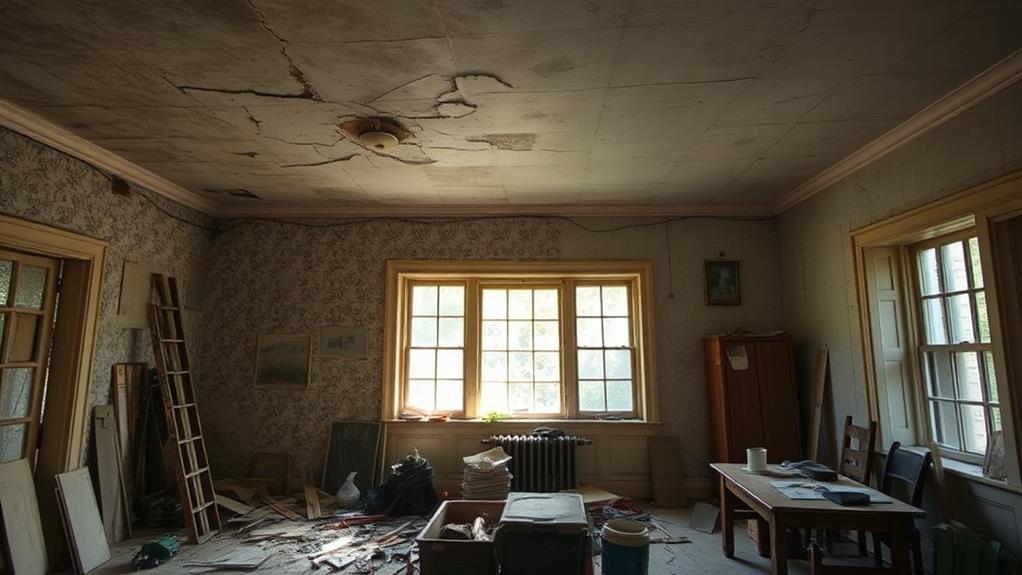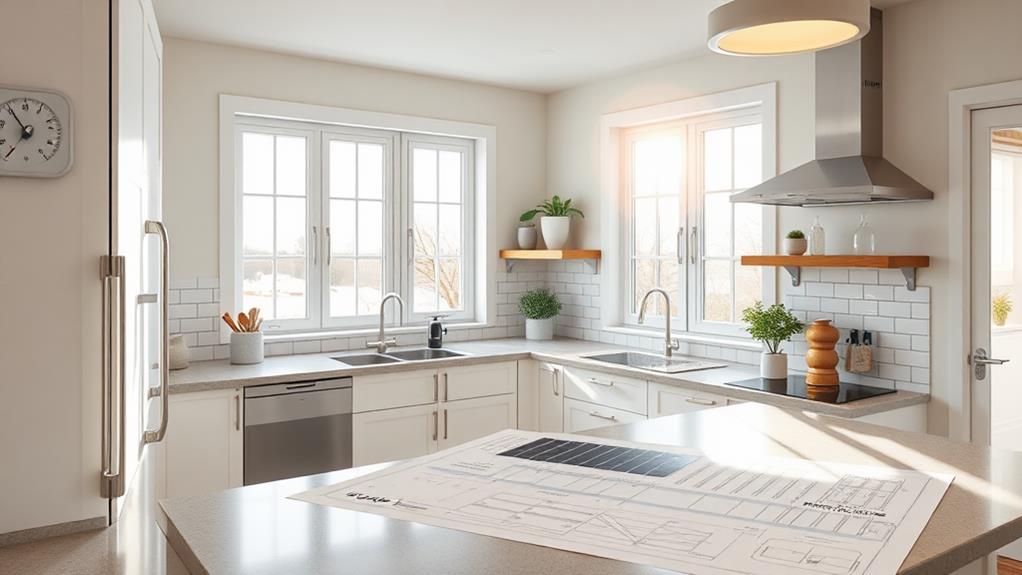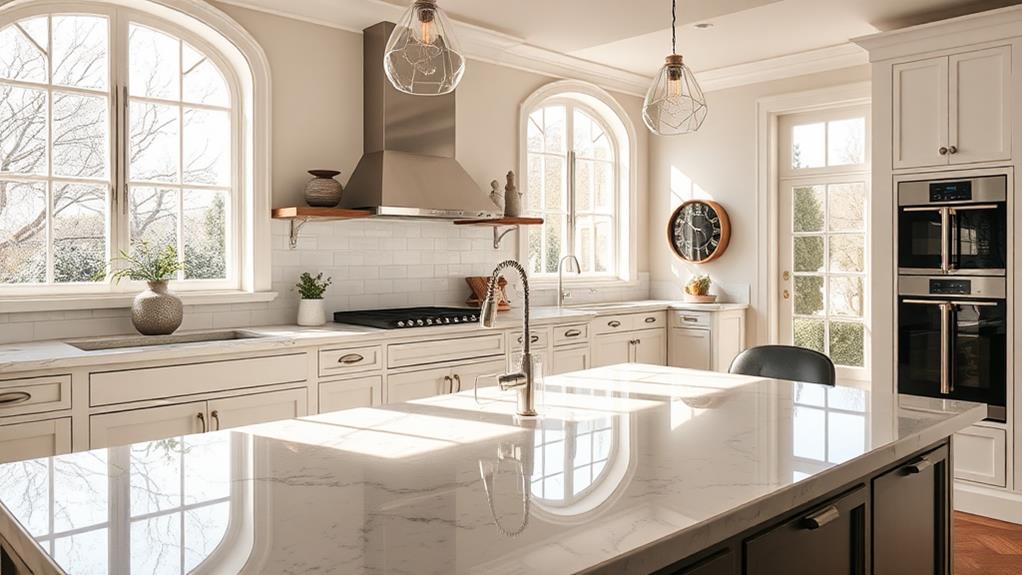Balancing immediate needs with future value in renovation decisions requires a strategic approach. Start by addressing critical repairs that affect safety and functionality, such as fixing leaky roofs or faulty electrical systems. Then, consider long-term improvements that enhance property value, like energy-efficient upgrades or kitchen renovations. Prioritize projects based on potential ROI and market trends, while also factoring in quality of life improvements. Develop a phased plan that tackles urgent issues first, followed by value-adding renovations over time. By carefully weighing immediate necessities against future benefits, homeowners can create a comprehensive renovation strategy that maximizes both short-term livability and long-term value.
Assessing Urgent Home Repairs

Identifying urgent home repairs is a critical first step in any renovation process. These repairs typically address safety hazards, structural issues, or problems that could lead to more extensive damage if left unattended. Common urgent repairs include fixing leaky roofs, repairing faulty electrical systems, addressing plumbing issues, and resolving foundation problems.
To assess urgent repairs, homeowners should conduct a thorough inspection of their property, paying close attention to signs of water damage, cracks in walls or foundations, and any unusual odors or sounds. It's advisable to enlist the help of professional inspectors or contractors for a comprehensive evaluation. They can identify hidden issues and provide expert recommendations on prioritizing repairs.
When determining urgency, consider factors such as the potential for further damage, safety risks, and the impact on daily living. Create a prioritized list of repairs, factoring in both the immediacy of the need and the associated costs. This approach ensures that critical issues are addressed promptly while allowing for strategic planning of less urgent renovations. By tackling urgent repairs first, homeowners can prevent more extensive and costly problems in the future.
Evaluating Long-Term Property Value
While addressing urgent repairs safeguards your home in the present, evaluating long-term property value helps guide renovation decisions for the future. Consider the potential return on investment (ROI) for various improvements, focusing on those that consistently add value to properties in your area.
Kitchen and bathroom renovations typically yield high returns, as do energy-efficient upgrades like modern HVAC systems or improved insulation.
Research local real estate trends and consult with experienced agents to understand which features are most sought-after in your market. Pay attention to the neighborhood's trajectory and upcoming developments that could impact property values. Avoid over-improving for your area, as this may limit your ability to recoup costs when selling.
Balance timeless upgrades with current design trends to maintain broad appeal. Prioritize improvements that enhance functionality and livability, such as creating open floor plans or adding usable square footage. Consider the longevity of materials and finishes to ensure your renovations stand the test of time.
Energy Efficiency Considerations

Sustainability plays a crucial role in modern renovation decisions, with energy efficiency at the forefront of many homeowners' considerations. Implementing energy-efficient upgrades can significantly reduce utility costs, enhance comfort, and increase a property's overall value. Key areas to focus on include insulation, windows, heating and cooling systems, and lighting.
Proper insulation in walls, attics, and floors can dramatically reduce heat loss in winter and heat gain in summer, leading to lower energy consumption. Upgrading to double or triple-pane windows with low-emissivity coatings can further improve thermal performance.
Installing high-efficiency HVAC systems, such as heat pumps or smart thermostats, can optimize climate control while minimizing energy use. LED lighting and Energy Star-rated appliances also contribute to reduced electricity consumption.
When considering energy efficiency renovations, homeowners should evaluate the potential return on investment. While some upgrades may have higher upfront costs, they often result in substantial long-term savings. Additionally, many jurisdictions offer incentives or tax credits for energy-efficient home improvements, further offsetting initial expenses. By prioritizing energy efficiency, homeowners can create a more sustainable living space while enhancing their property's marketability and future value.
Quality of Life Improvements
Beyond energy efficiency, quality of life improvements form a critical aspect of renovation decisions. These enhancements directly impact the daily comfort and functionality of a living space, often resulting in immediate satisfaction for homeowners.
Key areas to consider include kitchen and bathroom upgrades, which can significantly improve convenience and aesthetics. Modernizing these spaces with updated appliances, fixtures, and layouts can streamline daily routines and create a more enjoyable living environment.
Another crucial factor is the creation or optimization of multi-functional spaces. As remote work becomes increasingly common, renovations that incorporate home offices or flexible living areas can greatly enhance a property's utility. Additionally, outdoor living spaces such as decks, patios, or landscaped gardens can extend usable square footage and provide valuable areas for relaxation and entertainment.
Accessibility improvements, like wider doorways or first-floor master suites, can also be beneficial, especially for aging homeowners or those planning to age in place. When considering quality of life improvements, it's essential to balance personal preferences with potential long-term value, ensuring that renovations not only meet immediate needs but also contribute to the home's overall appeal and functionality.
Market Trends and Resale Impact

Many homeowners consider the potential impact on resale value when making renovation decisions. Market trends play a crucial role in determining which improvements are likely to yield the highest return on investment. Currently, energy-efficient upgrades, smart home technology, and open floor plans are highly sought after by potential buyers.
Kitchens and bathrooms continue to be focal points for home buyers, with modern appliances, updated fixtures, and ample storage space being key selling points. Outdoor living spaces, such as decks and patios, have also gained popularity, especially in the wake of recent lifestyle changes.
However, it's important to note that market trends can vary significantly by location and property type. What appeals to buyers in urban areas may differ from suburban or rural preferences. Additionally, overly personalized or niche renovations may limit the pool of potential buyers.
To maximize resale value, homeowners should focus on improvements that enhance the overall functionality and aesthetic appeal of the property while remaining in line with neighborhood standards. Consulting local real estate professionals can provide valuable insights into current market trends and buyer preferences specific to the area.
Budgeting for Balanced Renovations
How can homeowners effectively budget for renovations that strike a balance between personal preferences and financial prudence? The key lies in creating a comprehensive financial plan that accounts for both immediate needs and long-term value.
Begin by assessing your current financial situation, including savings, income, and potential financing options. Establish a realistic budget based on these factors, allocating funds to different aspects of the renovation.
Prioritize essential upgrades that address safety concerns or structural issues, as these directly impact the home's value and livability. Next, focus on improvements that offer the best return on investment, such as kitchen and bathroom updates or energy-efficient upgrades. Allocate a portion of the budget for personal preferences, but be mindful of potential over-customization that may limit future resale appeal.
Consider phasing renovations over time to spread out costs and allow for financial flexibility. Research cost-effective alternatives and explore DIY options where appropriate to maximize budget efficiency. Finally, include a contingency fund of 10-20% to account for unexpected expenses, ensuring the project remains on track without compromising quality or financial stability.
Frequently Asked Questions
How Do I Prioritize Renovations When Selling My Home in the Near Future?
When prioritizing renovations for a near-future home sale, focus on high-impact areas like kitchens and bathrooms. Address any structural issues, improve curb appeal, and consider energy-efficient upgrades. Consult a real estate agent for market-specific advice on valuable improvements.
Are There Tax Incentives for Certain Types of Home Improvements?
Yes, there are tax incentives for certain home improvements. Energy-efficient upgrades, such as solar panels or insulation, may qualify for federal tax credits. Some states also offer incentives for specific renovations. Consult a tax professional for detailed information.
Should I Hire a Professional Designer for My Renovation Project?
Studies show that professionally designed homes sell for 20% more on average. Hiring a professional designer for your renovation project can be beneficial, offering expertise in space planning, material selection, and creating cohesive, functional designs that maximize your home's potential.
How Can I Finance My Home Renovation Without Affecting My Credit Score?
To finance home renovation without impacting your credit score, consider options like cash savings, home equity lines of credit (HELOCs), or personal loans from family members. Additionally, explore government-backed renovation loans or manufacturer financing for specific projects.
What Are the Best Renovation Projects for Multi-Generational Households?
For multi-generational households, the best renovation projects typically include adding an accessory dwelling unit, creating first-floor master suites, installing walk-in showers, widening doorways, and improving kitchen accessibility. These modifications enhance comfort and functionality for all family members.
Conclusion
Striking a balance between immediate necessities and future value is paramount in renovation decision-making. Like a tightrope walker carefully traversing a wire, homeowners must skillfully navigate urgent repairs, long-term property appreciation, energy efficiency, quality of life enhancements, and market trends. A judiciously crafted budget serves as the balancing pole, enabling strategic investments that address current needs while maximizing future returns. By harmonizing these elements, renovators can create spaces that are both immediately functional and enduringly valuable.

